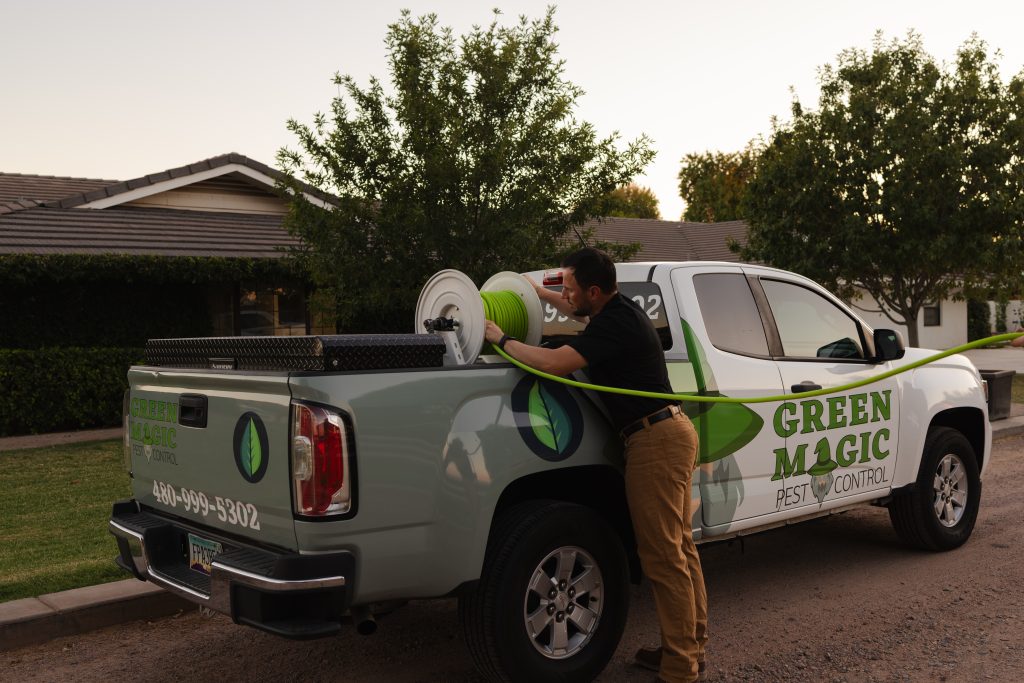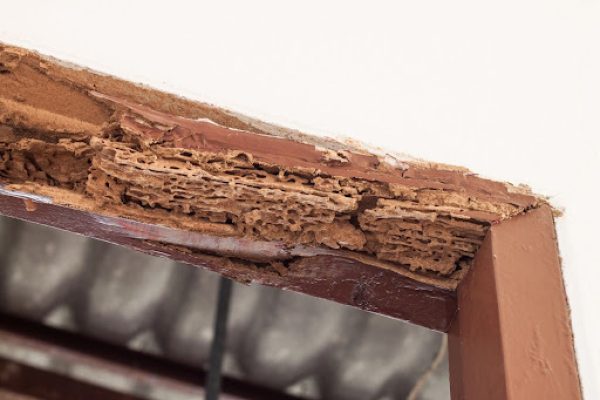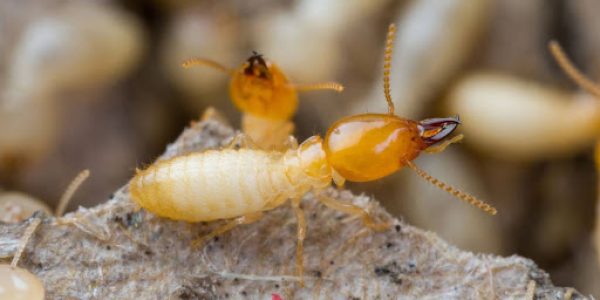Storage closets are some of the most common places for spiders to hide. These small, dark, and undisturbed spaces offer everything a spider needs to live quietly without being noticed. Many homeowners do not realize that cluttered closets, cardboard boxes, and low traffic areas create perfect conditions for spider activity. At Green Magic Pest Control, we help families understand how spiders enter these areas and how to keep them away using effective long term prevention strategies.
Why Spiders Are Drawn to Storage Closets
Spiders prefer environments where they can hide without interruption, and storage closets offer exactly that. Dim lighting, settled dust, and stacked items provide both shelter and hunting grounds for small insects. Closets often attract other pests such as moths, silverfish, and small beetles that serve as a food source for spiders. When these insects are present, spiders move in quickly. Eliminating the conditions that attract both spiders and their prey is the first step toward keeping your closets clear.
Reducing Clutter to Remove Hiding Spots
The more crowded your storage areas are, the more places spiders have to settle in. Boxes, bags, loose clothing, and stacked items create layers of shelter where spiders can hide undetected. Start by removing unnecessary clutter and organizing your closet so everything is stored neatly. Use sealed bins instead of cardboard, since cardboard absorbs moisture and attracts pests. When items are stored properly, closets become less appealing to spiders and easier to clean and inspect regularly.
Vacuuming and Dusting to Prevent Web Building
Spiders thrive in dusty, untouched areas. Regular cleaning significantly reduces the chance of web building and discourages spiders from staying. Vacuum the corners, along the baseboards, and behind boxes where webs often appear. Dust shelves and wipe down storage bins to eliminate insect activity. Cleaning also removes eggs and small webs that may be forming. A tidy closet that is cleaned once or twice a month becomes far less attractive to spiders and helps prevent long term infestations.
Sealing Gaps and Entry Points
Many spiders enter closets through cracks, gaps, and openings around baseboards or door frames. Small gaps in walls, attic access points, and crawl space entries also allow spiders to enter from other areas of the home. Inspect the closet carefully and seal any openings with caulk or weather stripping to reduce access. Check the door sweep and ensure it is tight against the floor. When all entry points are sealed, it becomes more difficult for spiders to move into these hidden areas of your home.
Removing Moisture and Improving Airflow
Spiders do not necessarily need moisture to survive, but many of the insects they hunt do. If your storage closet feels humid, it may attract bugs that bring spiders with them. Improve airflow by slightly opening the door when possible or installing a small vent if allowed. Consider using moisture absorbers or small dehumidifiers in closets that tend to feel damp. Reducing humidity lowers overall pest activity and makes the space far less appealing for spiders looking for prey.
Using Proper Lighting to Discourage Spiders
Spiders prefer dark and quiet locations, so closets with limited lighting are ideal hiding spots. Improve visibility by using brighter bulbs, motion activated lights, or battery powered LED lights on the shelves. Increased lighting makes the space less inviting for spiders and also helps you notice any activity before it becomes a larger problem. Well lit storage areas are easier to maintain and prevent pests from settling unnoticed.
Using Natural Repellents for Added Protection
There are several natural scents that spiders tend to avoid. Peppermint, eucalyptus, and citrus oils can help discourage spiders from settling in closets. Mix a few drops of essential oil with water in a spray bottle and lightly mist shelves and corners every few weeks. You can also use sachets filled with cedar chips or lavender to help repel insects. While natural repellents do not eliminate infestations, they help maintain a protective barrier and support your other prevention efforts.
Inspecting Boxes and Stored Items for Hidden Pests
Before placing items into storage, check them for insects or spider activity. Spiders often hide inside boxes, shoes, seasonal items, and fabric. Shake clothing and blankets before storing them and clean items that may have been sitting unused for long periods. Keep stored belongings in tightly sealed containers to prevent pests from accessing them. Regularly rotating or inspecting stored items disrupts hiding places and keeps pests from settling in.
When to Call a Professional
If your storage closets consistently develop spider activity even after cleaning and sealing, there may be a larger pest issue in the surrounding areas of the home. Spiders often move into closets because other insects are available as food. A professional pest inspection identifies the source of the problem and pinpoints the areas that need treatment. Green Magic Pest Control offers safe and effective treatments that target spiders and the insects that attract them, ensuring long term protection throughout your home.
Trust Green Magic Pest Control for Spider Prevention
At Green Magic Pest Control, we help homeowners maintain pest free spaces through proven treatments and preventive strategies. Storage closets may be small, but they play a major role in keeping spiders out of the rest of your home. With regular cleaning, proper sealing, and expert pest control services, you can enjoy a home that feels clean and protected all year long. Contact Green Magic Pest Control today to schedule a professional inspection and keep spiders out of your storage spaces for good.







